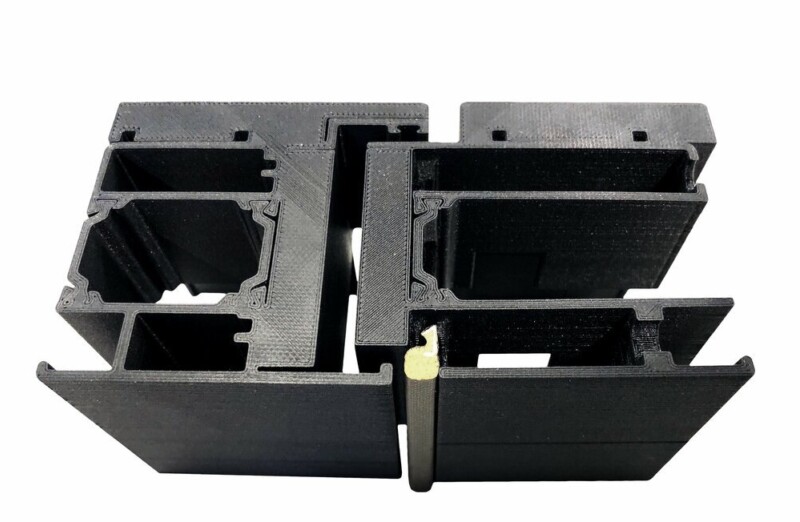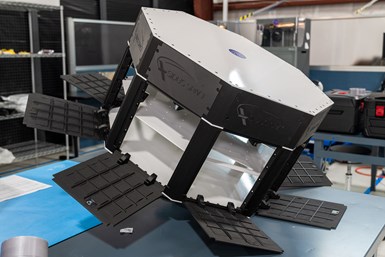Prototyping effectively is an important part of the product life cycle. Through continuous testing and refining iterations, engineers can arrive at a final part design that works with the desired features and performance.
The first commercially available 3D printers birthed the concept of rapid prototyping. Before 3D printing, long lead times and high costs of low-volume parts meant product development teams could only iterate a few times before part designs needed to be finalized. However, 3D printing slashed these long lead times and costs. Now, 3D printers allow engineers and R&D teams to validate their designs quicker, easier and more cost-effectively than before. Ultimately, this allows more design iterations to be squeezed into a given time frame — teams can arrive at final part designs earlier, and get validated products to market faster. While the market is still crowded with printers strictly suitable for prototyping use, the emergence of industrial-scale additive manufacturing applies lead time and cost benefits far beyond PLA mockups. Industrial 3D printers now fabricate everything from tooling and specialized end-use parts at the point of need, in just days. Even as 3D printing expands into more end-use applications, rapid prototyping continues to be an impactful way for manufacturers to improve product development. Read this blog to learn about rapid prototyping with 3D printing: what it is, how it works, its relationship to additive manufacturing, plus benefits and considerations.
What is rapid prototyping? Prototyping is an integral part of product design and engineering. It is an iterative process to arrive at an optimized, test-proven design. Engineers will design an initial concept model of a part or product to test. Then, they will fabricate a part with the tentative design (the prototype), run it through a suite of tests, and then evaluate the design for upsides and areas of improvement. These activities will be repeated to arrive at a final validated design that satisfies desired customer and engineering requirements. Rapid prototyping is the use of digital technologies to design and fabricate prototypes faster and easier. Rapid prototyping typically relies on 3D printing technologies to fabricate the prototypes quickly, as it circumvents the need to use tool or die sets. Beyond physical fabrication of prototypes, rapid prototyping includes engineering activities like design, modification, and testing. Before rapid prototyping. Before commercial 3D printing, engineers had to rely on a combination of hasty foam mockups and detailed clay models crafted by skilled artisans. This meant far longer lead times for the manufacture of each prototype, as well as higher fabrication costs associated with each prototype part — ultimately allowing for fewer part iterations in each design cycle in any given span of time.

How rapid prototyping works
Rapid prototyping begins with the creation of a computer-aided design (CAD) file for the part’s first iteration. The user can then import the design file for the part into 3D printer software. From there, the user hits print. In anywhere from hours to 1-2 days, the prototype part will be ready for testing, evaluation, and modification for the next iteration. Many 3D printers, however, are limited to only prototype-grade parts. When using these printers, designs might require modifications to accommodate traditional manufacturing limitations. When prototyping with industrial-scale additive manufacturing, users simply swap prototyping plastics such as PLA for higher-strength materials.
Rapid prototyping and 3D printing
Formal definitions. The formal definition of 3D printing is a manufacturing process that uses layer-by-layer fabrication to translate digital CAD files into tangible objects. Rapid prototyping is one of many use cases for 3D printing.
Contemporary usage. Today, the term rapid prototyping is mainly associated with the old era of 3D printers. These early printers weren’t capable of delivering part strength or quality sufficient for higher-value manufacturing applications. This effectively limited their use to prototyping. Many of the earlier printers marketed as rapid prototyping solutions — thus branding 3D printing as a rapid prototyping technology until the last decade. Consequently, the two terms were often conflated and ‘rapid prototyping’ became a popular misnomer for ‘3D printing.’
Emergence of additive manufacturing. Today, the widespread term ‘additive manufacturing’ connotes a paradigm shift in 3D printing. The term typically describes 3D printing’s use for high-value industrial applications, such as performance-critical end use parts. Implicitly, the term speaks to 3D printing’s departure from its early use limited to rapid prototyping.
Benefits of rapid prototyping with 3D printing
Employing a 3D printing platform to enable rapid prototyping offers numerous benefits compared to prototyping through traditional methods:
Shorter lead times. Rapid prototyping with 3D printing brings lead times down to anywhere from just hours to days. Using traditional manufacturing methods, prototypes require new tooling, and/or additional processes like drafting drawings, submitting POs, and dealing with shipment times. Without in-house 3D printing, procuring each prototype can take weeks to months. Faster lead times do more than just allay impatience — they create tangible business benefits. Companies can innovate faster and get their products to market sooner.
Cost efficiency. Compared to traditional manufacturing, using a 3D printer for rapid prototyping also has far more favorable unit economics. It does not require expensive specialized labor, third party vendor costs, or necessitate use of tool or die sets.
Ease of use. The simplicity of using a 3D printer for rapid prototyping also doesn’t hurt. Printing parts does not require specialized expertise: anyone can do it. Dedicated machinists do not have to commit long hours, nor is there a need to draft drawings, submit purchase orders, and coordinate logistical details with third party vendors.
Same-platform prototyping and production. Using an industrial-scale 3D printer — as opposed to one limited to weaker prototyping materials — means product developers can prototype and build tooling or the final part with same platform. This helps ensure a successful print job for the final part. Rather than making adjustments to accommodate limitations of subtractive manufacturing, users can simply swap to a higher-performance material.
Considerations for rapid prototyping
Materials. Many users prefer to fabricate prototypes with cost-effective materials. This saves money on prototypes that do not require enhanced mechanical properties. For users with advanced 3D printers with production capabilities, higher-performance materials can be reserved for functional prototypes in strength-demanding applications — such as snowboard binding prototypes, for example — or for printing the final, validated parts. 3D printing with advanced plastics is also a faster and cheaper way to produce prototypes for parts that ultimately need to be made with metal. PLA (Polylactic acid) is a common and low-cost prototyping material, a low-temperature thermoplastic that is one of the easiest materials to 3D print successfully.
Printers. Another consideration is the specific 3D printer to be used for rapid prototyping. Organizations should consider factors such as the 3D printer’s speed, reliability, materials supported, build sizes, and software functionality. While there are many 3D printers capable of producing low-quality prototypes, organizations should consider printers with the potential to also produce high-quality end-use parts. A cost-effective machine that only prints PLA might seem like an easy rapid prototyping solution. However, compromising on a printer’s reliability can hinder design cycles and nullify any benefit.
To read the full article, click here.
Click here to learn more, get a quote, or contact an expert at The SolidExperts.


SUBMIT YOUR COMMENT